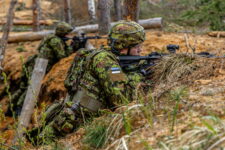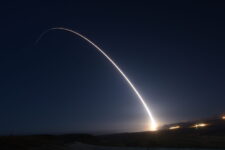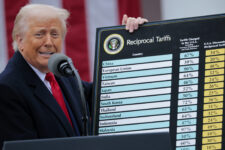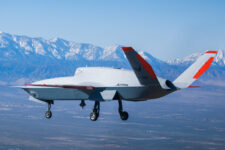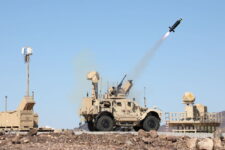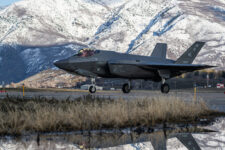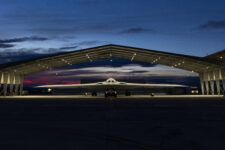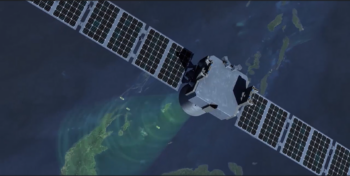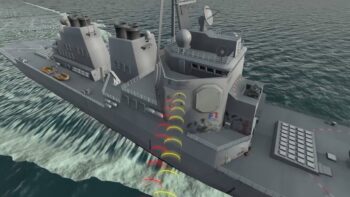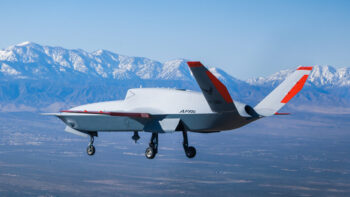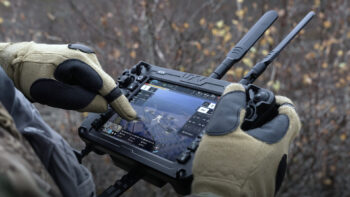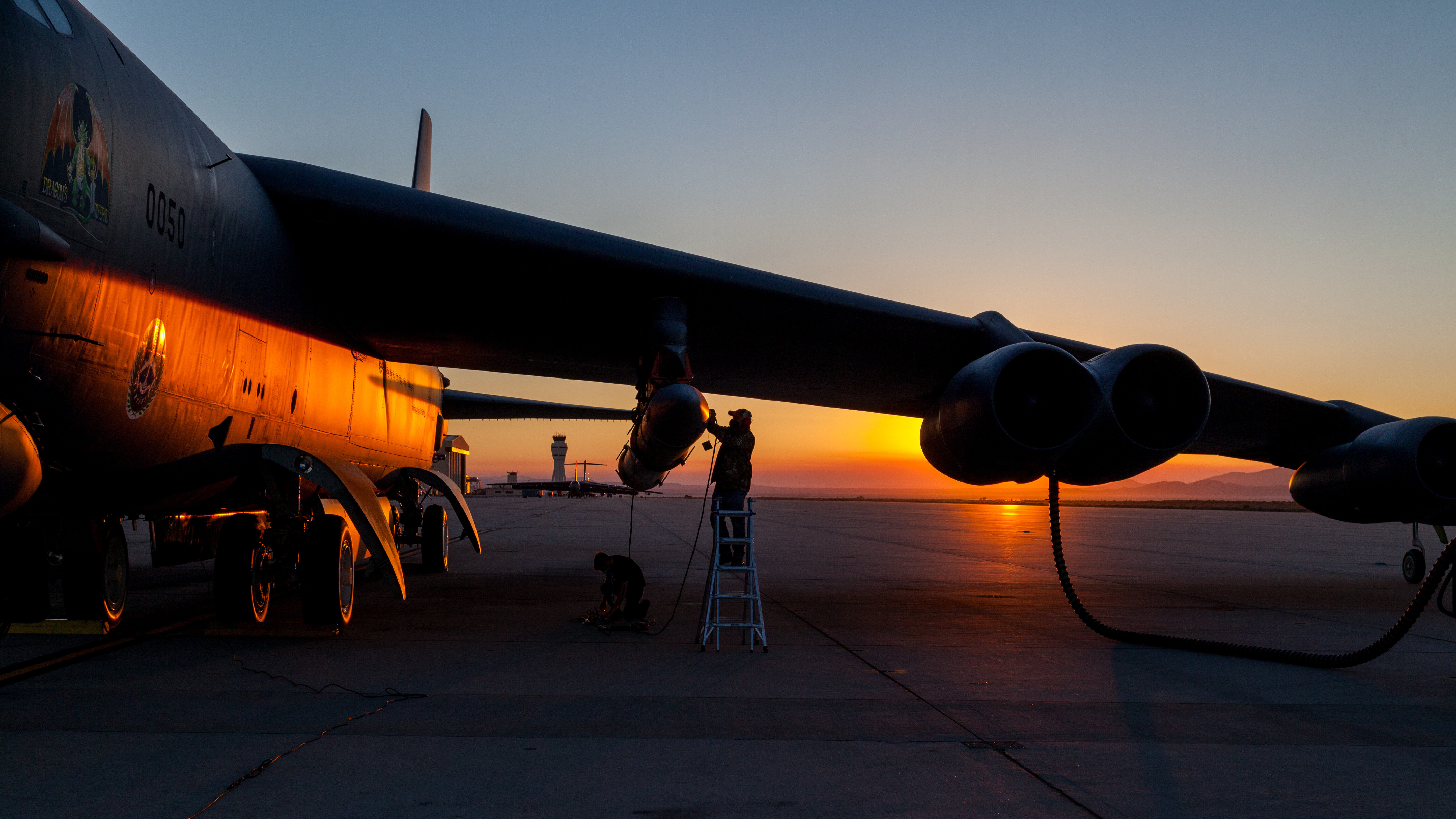
The Air Force test team loads an the hypersonic Air-launched Rapid Response Weapon (ARRW) for a 2020 captive carry test. (Air Force/Kyle Brasier)
WASHINGTON: The Air Force still has enough time to wrap up tests of its first hypersonic missile and begin production by the end of the fiscal year, the service’s program executive for weapons believes.
However, hitting that milestone will depend on how quickly the service can figure out the issue that caused a Dec. 15 booster test of the AGM-183A Air-Launched Rapid Response Weapon (ARRW) to fail before launch, Brig. Gen. Heath Collins told Breaking Defense in a Jan. 13 interview.
“We have a bunch of test windows aligned and scheduled on the range throughout the year – the next one is in a couple months,” he said. “We are really focusing on getting the failure review board done, the corrective actions completed and trying to make sure we’re ready for that next test window.”
In a Dec. 20 statement, the Air Force said an “unknown issue” caused the launch sequence to be aborted before the ARRW booster could be released. After working through the holidays, the program office is “making progress” on figuring out what prompted the failure, Collins said.
Once the root cause is found, the Air Force will have to make quick, steady work on its final test points in order to begin production in FY22. The service must log a successful booster flight test — an achievement it has not been able to muster over three attempts — and successfully launch the first all-up round, where the missile will be tested in its final, assembled form.
“If we get that and a successful Production Readiness Review, we still could get through a production decision before the end of the fiscal year,” Collins said. “My caveat to that, though, is … it is dependent on resolution of the failure and executing the rest of the test program up through all-up-round [testing].”
The ARRW booster test held in December was the third booster launch to end in failure. During an April 5 test, the booster was not able to compete its launch sequence due to a component failure. A July 28 test failed after ARRW’s engine did not ignite after launch. Both issues are believed to be unrelated to the issue that caused the latest launch abort, Collins said.
The Air Force has requested $161 million this fiscal year to buy the first 12 ARRW missiles from manufacturer Lockheed Martin. However, it remains to be seen whether Congress will grant the full amount.
The House Appropriations Committee recommended a $44 million cut from the program — essentially cutting the funds needed for the four all-up rounds required to declare early operational capability — due to concerns that the program had become “increasingly delayed and compressed, increasing the concurrency risk” to the first production lot of weapons.
“Should the prototyping flight tests result in minimal discoveries, … the Committee supports the use of these funds to procure missiles above the eight funded in this recommendation by utilizing buy-to-budget authority,” the committee wrote.
The Senate Appropriations Committee went further, recommending a $80 million cut to the program due to funds being “early to need.”
Elon Musk sat in on job interview for Air Force’s top civilian
“I have no relationship with Space X or Mr. Musk outside of a professional relationship in execution of my current duties,” Meink stated in written responses to questions from Sen. Elizabeth Warren.
Air Force Secretary Frank Kendall has also raised questions about the service’s existing hypersonic programs, saying during a Center for a New American Security event on Wednesday that “we have to be careful about not mirror imaging the potential threats, particularly China.”
Over the past couple decades, China has developed and fielded cruise and ballistic missiles that can be launched from the air, sea and ground en masse, Kendall said. With the US military and its allies bringing on more capable defenses for their platforms, China is “moving on” to hypersonic weapons that can prosecute these more difficult targets.
While Kendall did not mention the ARRW program specifically, he said that “not enough work” has been done by the Air Force to understand where its investment in hypersonic weapons can bare the most fruit.
“We don’t have the same targets that [China is] worried about, so we have to think about what’s most cost effective for us,” he said. “And while I do think there is a role for hypersonics in that mix — and I think we should continue with and proceed with developing and fielding appropriate hypersonics — I think we have to look very carefully at the targets that that we’re interested in, and at the most cost effective way to deal with [them].”
Despite the issues in testing, Collins said he remains confident in the ARRW program and pointed out that previous failures were not the result of design flaws.
“We’re not running into any major design problems with the booster,” he said. “We are just just trying to get enough time in the year to continue to work through the sequence [of tests].”

